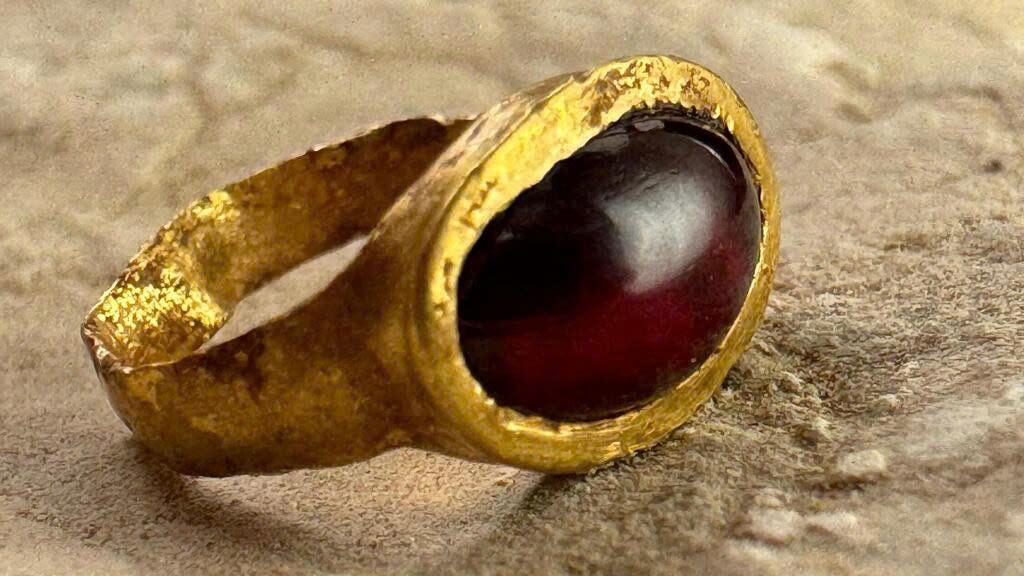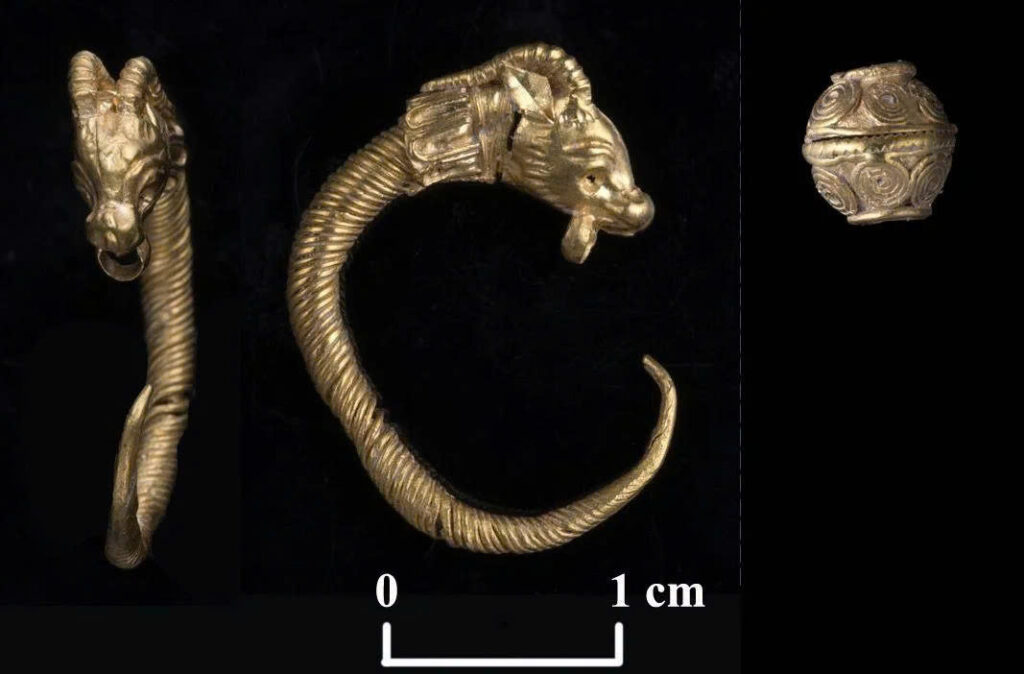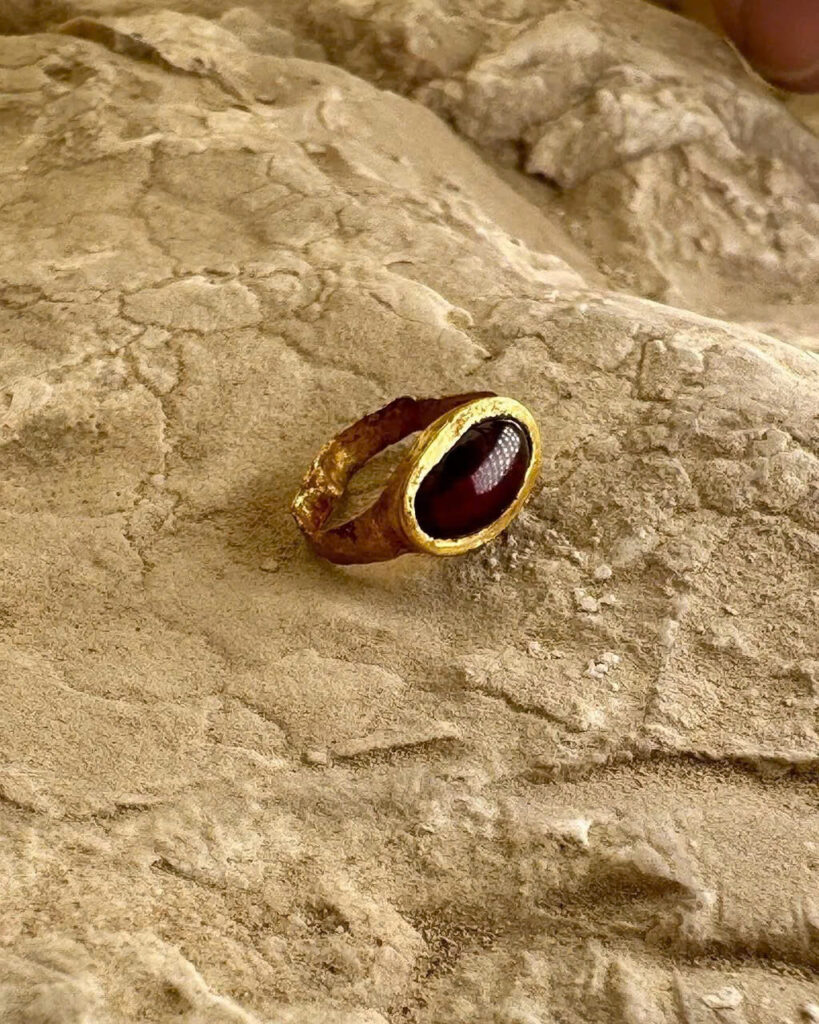A remarkable archaeological discovery has brought new insights into ancient Jerusalem’s prosperity during the Hellenistic period. Researchers working in the City of David have unearthed an extraordinary 2,300-year-old gold ring adorned with a beautifully polished red garnet stone, providing fresh evidence of the city’s wealth and cultural sophistication during the Second Temple era.
Exceptional Archaeological Find Reveals Ancient Wealth
The magnificent gold ring represents the second discovery of its kind within the past year at this significant archaeological site. The joint excavation, conducted by the Israel Antiquities Authority (IAA) and Tel Aviv University within Jerusalem Walls National Park, has yielded unprecedented treasures that illuminate the lives of Jerusalem’s ancient inhabitants.

The precious ring was discovered embedded within the foundation stones of a substantial ancient structure, believed to have been constructed during the late third or early second century BCE. This remarkable find was accompanied by an impressive array of additional jewelry pieces, creating what archaeologists describe as the most significant collection of gold artifacts from this period ever found in Jerusalem.
Rich Collection of Ancient Treasures Uncovered
Diverse Array of Precious Artifacts
Alongside the stunning garnet ring, excavators discovered an exceptional assortment of jewelry including multiple bronze earrings, an intricately decorated gold bead, and a gold earring featuring the carved image of a horned creature. The strategic placement of these artifacts within the same archaeological layer suggests their deposition was intentional and held deep cultural meaning.

Efrat Bocher, one of the excavation’s lead managers, expressed her amazement at the discovery: “Never before have we encountered such an extensive collection of gold jewelry from this historical period in Jerusalem. This extraordinary display of wealth is exceptionally rare in archaeological contexts and demonstrates the remarkable prosperity of Jerusalem and the elevated living standards enjoyed by its residents during this era.”
Cultural Significance and Ancient Traditions
The discovery has sparked fascinating theories about ancient customs and traditions. Dr. Marion Zindel, who conducted detailed analysis of the rings, proposed an intriguing interpretation: “We are currently investigating the possibility that this jewelry collection was intentionally placed beneath the building’s foundation as part of a well-documented Hellenistic tradition. During this period, engaged women would ceremonially bury their jewelry and childhood possessions within house foundations, symbolizing their transition from youth to married adulthood.”
International Influences in Ancient Jerusalem
Cross-Cultural Fashion Trends

The sophisticated craftsmanship and design elements of the discovered jewelry reveal fascinating insights into ancient cultural exchange. The combination of lustrous gold with richly colored gemstones like the deep red garnet demonstrates the influence of Eastern fashion trends from regions including Persia and India. These international stylistic influences reached Jerusalem through expanded trade networks established following Alexander the Great’s conquests, showcasing the city’s position as a cosmopolitan center of commerce and culture.
Video
Moment of Discovery
Archaeological Team’s Exciting Find
Rivka Lengler, a dedicated member of the excavation team present during the ring’s discovery, shared the thrilling moment: “We were carefully sifting excavated soil through our screening equipment near the dig site when suddenly Ben, my colleague, extracted a gleaming gold ring from the dirt. Initially, he assumed it must be a contemporary piece accidentally dropped by one of our team members, but upon closer examination, I immediately recognized its ancient origins.”
Historical Impact and Legacy

Eli Escusido, Director of the Israel Antiquities Authority, emphasized the profound cultural importance of this discovery: “The unearthing of these golden rings from the Second Temple period within the City of David provides concrete evidence of Jerusalem’s remarkable wealth, artistic beauty, and historical significance spanning thousands of years.”
This extraordinary archaeological discovery continues to enhance our understanding of ancient Jerusalem’s role as a center of prosperity and cultural sophistication, offering tangible connections to the lives and traditions of people who walked these streets over two millennia ago.

